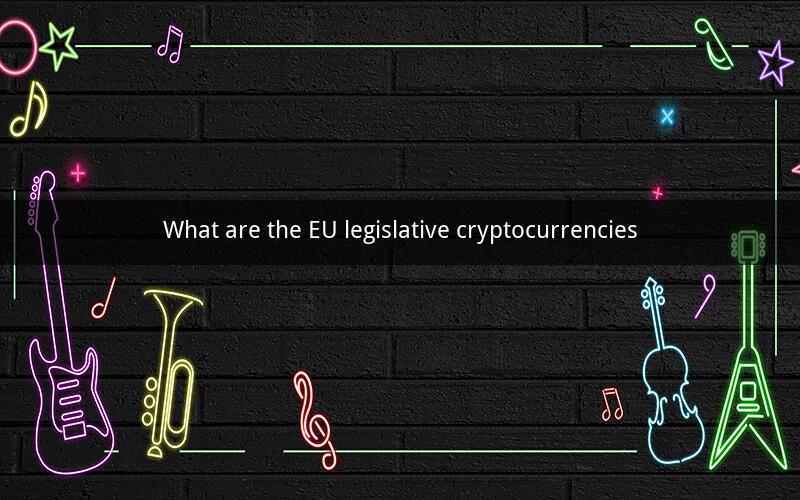
Table of Contents
1. Introduction to the EU legislative framework
2. The EU's stance on cryptocurrencies
3. Key regulations and directives
3.1 Anti-Money Laundering (AML) and Counter-Terrorist Financing (CTF)
3.2 Markets in Crypto-Assets (MiCA)
3.3 Digital Operational Resilience (DOR)
4. Impact on the crypto industry
5. Conclusion
1. Introduction to the EU legislative framework
The European Union (EU) has been actively involved in shaping the regulatory landscape for cryptocurrencies. As the digital currency market continues to grow, the EU aims to ensure the protection of consumers, prevent financial crimes, and foster innovation in the crypto industry.
2. The EU's stance on cryptocurrencies
The EU recognizes the potential of cryptocurrencies as a disruptive technology that can revolutionize the financial sector. However, it also acknowledges the risks associated with their unregulated nature. Therefore, the EU's stance is to regulate cryptocurrencies while promoting innovation and growth.
3. Key regulations and directives
3.1 Anti-Money Laundering (AML) and Counter-Terrorist Financing (CTF)
To combat money laundering and terrorist financing, the EU has implemented the Fifth Anti-Money Laundering Directive (5AMLD). This directive requires virtual asset service providers (VASPs) to comply with strict AML/CTF measures, including customer due diligence, record-keeping, and reporting obligations.
3.2 Markets in Crypto-Assets (MiCA)
The Markets in Crypto-Assets Regulation (MiCA) is a comprehensive legislative framework aimed at regulating crypto-assets and their markets. MiCA sets out rules for issuers, service providers, and users of crypto-assets, including provisions on transparency, consumer protection, and market integrity.
3.3 Digital Operational Resilience (DOR)
The EU has also introduced the Digital Operational Resilience Act (DORA) to ensure that crypto-asset service providers (CASPs) are resilient to operational risks. DORA requires CASPs to implement risk management measures, including incident reporting and recovery plans.
4. Impact on the crypto industry
The EU's legislative framework has had a significant impact on the crypto industry. While the regulations have created a more secure and transparent environment, they have also raised barriers for entry and increased compliance costs. However, the industry has adapted to these challenges and continues to grow.
4.1 Increased adoption
The EU's regulatory framework has encouraged more businesses and consumers to adopt cryptocurrencies. As the market becomes more regulated, trust in the technology has increased, leading to a surge in usage.
4.2 Innovation
The EU's regulations have not only aimed to mitigate risks but also to foster innovation. By providing a clear regulatory framework, the EU has encouraged startups and established companies to develop new crypto-assets and services.
5. Conclusion
The EU's legislative framework on cryptocurrencies has been designed to balance innovation and security. While the regulations have raised challenges for the industry, they have also paved the way for a more stable and transparent market. As the crypto industry continues to evolve, it is crucial for stakeholders to stay informed and adapt to the changing regulatory landscape.
Questions and Answers
1. What is the main objective of the EU's legislative framework on cryptocurrencies?
Answer: The main objective is to ensure the protection of consumers, prevent financial crimes, and foster innovation in the crypto industry.
2. How does the 5AMLD impact virtual asset service providers (VASPs)?
Answer: The 5AMLD requires VASPs to comply with strict AML/CTF measures, including customer due diligence, record-keeping, and reporting obligations.
3. What are the key provisions of the Markets in Crypto-Assets Regulation (MiCA)?
Answer: MiCA sets out rules for issuers, service providers, and users of crypto-assets, including provisions on transparency, consumer protection, and market integrity.
4. How does the Digital Operational Resilience Act (DORA) affect crypto-asset service providers (CASPs)?
Answer: DORA requires CASPs to implement risk management measures, including incident reporting and recovery plans.
5. What has been the impact of the EU's regulatory framework on the crypto industry?
Answer: The regulations have created a more secure and transparent environment, raised barriers for entry, and increased compliance costs. However, the industry has adapted to these challenges and continues to grow.
6. How has the EU's stance on cryptocurrencies influenced consumer trust?
Answer: The EU's regulatory framework has encouraged more businesses and consumers to adopt cryptocurrencies, leading to increased trust in the technology.
7. What role do startups play in the crypto industry under the EU's regulatory landscape?
Answer: Startups can take advantage of the clear regulatory framework to develop new crypto-assets and services, fostering innovation.
8. How have established companies responded to the EU's legislative framework on cryptocurrencies?
Answer: Established companies have adapted to the regulations by ensuring compliance and exploring new opportunities in the market.
9. What challenges do crypto-asset service providers (CASPs) face under the EU's regulatory landscape?
Answer: CASPs face challenges such as increased compliance costs, operational risks, and the need to stay informed about changing regulations.
10. How can stakeholders stay informed about the EU's legislative framework on cryptocurrencies?
Answer: Stakeholders can stay informed by following updates from the European Parliament, the European Commission, and other regulatory bodies, as well as by seeking legal advice and attending industry conferences.